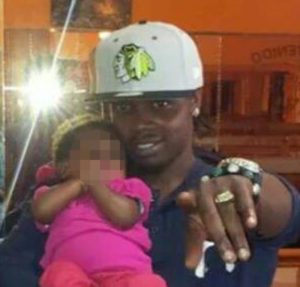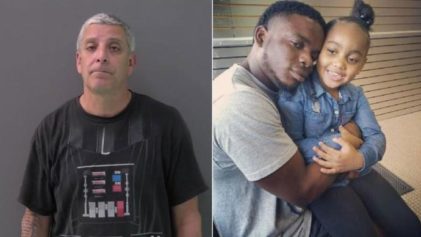Though rookie New York City police officer Peter Liang may have mistakenly fired his gun and killed 28-year-old Akai Gurley in a darkened stairwell at the Louis Pink housing project on Thursday night, a key question stands out: Why did the officer feel the need to have his gun drawn while simply patrolling a residential building on a Thursday night?
But a comment made by Patrick J. Lynch, the president of the Patrolmen’s Benevolent Association, after the shooting provided an insight into the primary reason Liang likely had his gun drawn: fear.
“The Pink Houses are among the most dangerous projects in the city, and their stairwells are the most dangerous places in the projects,” Lynch said, according to the New York Times. “Dimly lit stairways and dilapidated conditions create fertile ground for violent crime, while the constant presence of illegal firearms creates a dangerous and highly volatile environment for police officers and residents alike.”
In other words, we should think it’s reasonable for police officers to walk around with their guns out, because there have been violent crimes committed in the area. But Lynch’s statement points to a major disconnect between the way police officers view such neighborhoods and the way they are seen by local residents. Though crime has always been a vexing problem at housing projects like the Pink Houses, a problem that residents have long complained about, the fact remains that the Pink Houses are still home to many New Yorkers. And as has been demonstrated many times, when police patrol crime-ridden neighborhoods grappling with a fear of unknown criminals, it is often innocent neighborhood residents who pay the price—residents who happen to look remarkably similar to the criminals.
This is what happened in 2004, when police killed 19-year-old high school student Timothy Stansbury Jr. after coming upon him in the darkened stairwell of a Brooklyn housing project as the teen was on his way to a birthday party. The officers didn’t even exchange words with Stansbury before the fatal shot was fired.
At the time, Police Commissioner Raymond W. Kelly said, “This is a tragic incident that compels us to take an in-depth look at our tactics and training, both for new and veteran officers.”
While the city eventually paid out $2 million in a settlement to Stansbury’s family, the officer involved, Richard S. Neri Jr., was just suspended for 30 days and permanently stripped of his gun.
As Liang and his partner walked the halls and stairwells of the Pink Houses, Liang’s gun represented a threat to the innocents among them just as much as or more than it did to the criminals.
A 2005 study by researchers at Florida State University found that a group of mostly white, mostly male police officers placed in video simulations—they press “shoot” if they think the white or Black suspect on the screen holds a gun—were statistically more likely to let armed white suspects slip while shooting unarmed Black suspects instead. That’s because researchers have shown that when people see a Black man, their first reaction is more likely to be fear. Interestingly, this even happens to Black people, so conditioned is our society to link Black males to crime and violence.
Liang, 27, had just been on the job for 18 months, meaning he didn’t have nearly as much experience in places like the Pink Houses as more seasoned officers—meaning his instincts told him that when entering a darkened stairwell, pull out your gun.
Liang’s partner pulled out his flashlight, but he didn’t draw his revolver. So the two weren’t following any NYPD protocol, they were just responding to their instincts.
“There’s not a specific prohibition against taking a firearm out,” Police Commissioner William Bratton said yesterday. “As in all cases, an officer would have to justify the circumstances that required him to or resulted in his unholstering his firearm.”
Bratton listed the crimes that have occurred in the Pink Houses in recent months: two robberies and four assaults in the past month, two homicides in the past year, and a shooting in a nearby lobby last Saturday.
In other words, it’s a scary place.
The NYPD had decided to assign many rookie officers to patrol the buildings in the housing project, what they call “vertical patrols.”
The Times described the encounter that resulted in Gurley’s death in this way:
The two officers were working an overtime tour and had just inspected the roof when they came upon the dark stairwell, which officers view as a common location for criminal activity. While both officers took out their flashlights, only Liang drew his sidearm, a 9-millimeter semiautomatic. As Liang, who is left-handed, tried to turn the knob of the door that opens to the stairwell with that hand while also holding the gun, it appears he rotated the barrel of the gun down and accidentally fired, a high-ranking police official told the Times.
Gurley and his girlfriend, Melissa Butler, had been waiting for an elevator on the seventh floor, but when it never came, they entered the stairwell—and a bullet immediately struck Gurley. He was pronounced dead at Brookdale Hospital.
Liang was relieved of his gun and his badge pending an investigation.
Antonio Bolfo, a former police officer who spent years conducting vertical patrols in the South Bronx, spoke about the stairwells to the Times.
“They’re dark, they smell, everything echoes,” he said. “It’s a very ominous kind of vibe.”
“For a new guy in the projects,” he said, “it can be a scary thing.”



